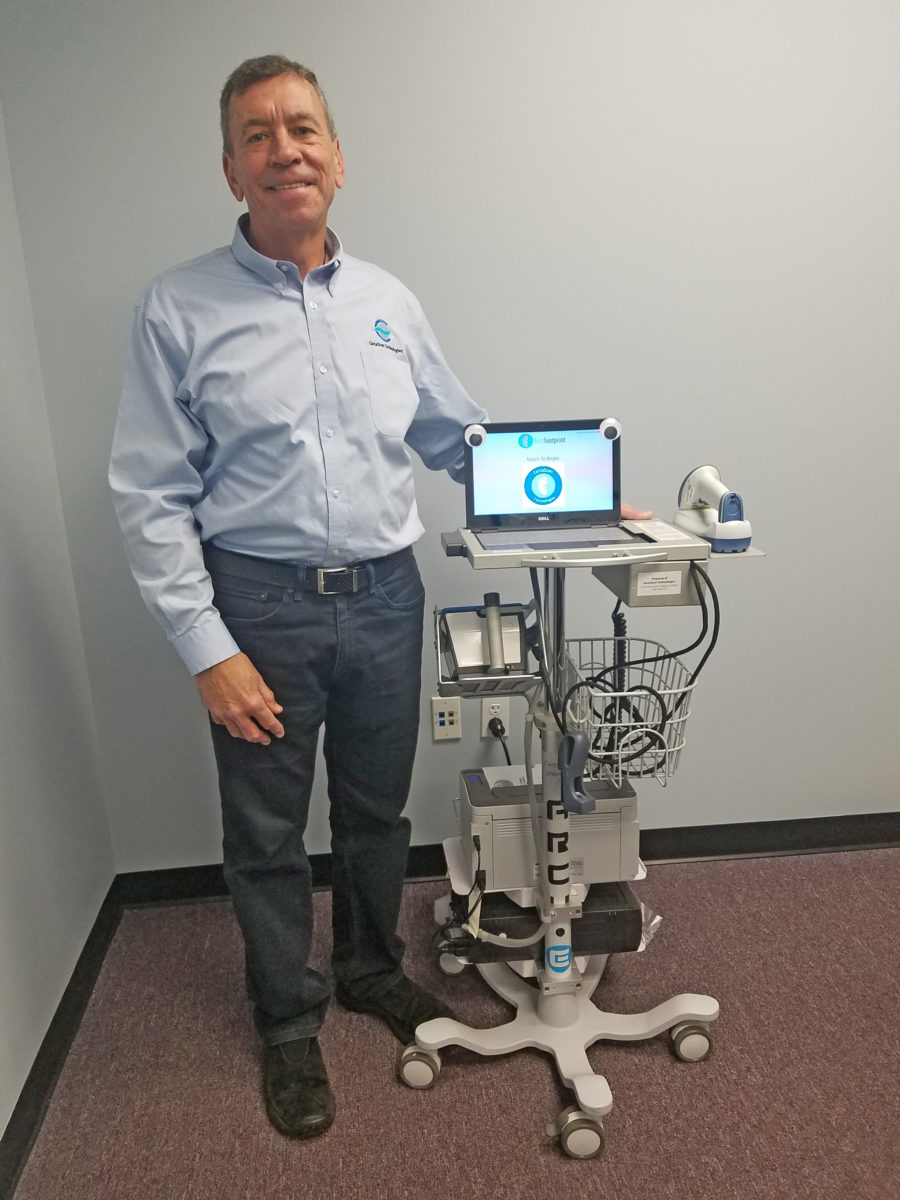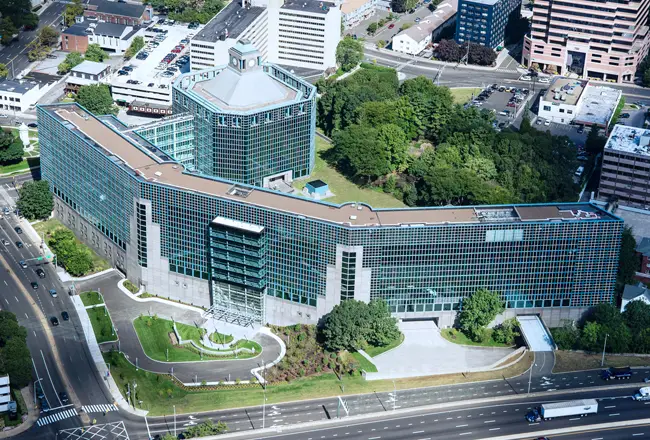A newborn”™s footprints have long been a fun keepsake for parents and an easy way for hospitals to maintain their records ”” primarily to avoid mix-ups, but also to help aid law enforcement and disaster relief agencies in determining the identity of a child who”™s gone missing, sometimes for years.
As with fingerprints, footprints are unique to each person and can be used for forensic identification throughout one”™s lifetime.

But the old ink-and-paper method used to footprint a newborn is inevitably giving way to the digital age. CertaScan Technologies LLC in Stamford represents the next step forward in the area, providing a modern scanning technology and patent- pending system to scan the feet of newborn babies instead of simply digitizing photos of the ink-and-paper print.
James McKenna, president and COO of CertaScan, said the idea for the company grew out of the 19 years he spent at what is now Mom365, the country”™s largest professional photographer of newborns. During that time he saw photography shift to digital and the rise of the “Have you seen me?” photos and biographical details printed on milk cartons in attempts to locate missing or abducted children.
“Ink can smear or otherwise result in a less-than-perfect image,” McKenna said at CertaScan”™s 76 Progress Drive headquarters, “What I wanted to do was come up with something that was reliable, easy to use and cost-effective.”
Footprints are also preferable to fingerprints as it can be difficult and painful to pry open a newborn”™s fist long enough to get a usable print. Iris scans are useless as the iris is still developing for the first three years of a person”™s life.
With David Yarnell, the former Mom365 executive chairman and CEO, and hardware design consultant Michael Peck as chief technology officer, McKenna launched CertaScan in April of 2014. Yarnell is their new company”™s chairman and CEO.
“I”™d become an empty nester,” said McKenna, “so the company basically started with all the equipment and fabrication on the first floor of my home in Fairfield ”” much to my wife”™s chagrin.”
Today the company employs 10 full-time employees, including two salespeople in the Charlotte, North Carolina region. In addition to its 600-square-foot office space at 76 Progress Drive, it also maintains another 600 square feet there for manufacturing and order fulfilment, with the option to expand that space as demand grows.
Interest in what CertaScan offers was almost instantaneous, McKenna said. To date the company has completed more than 50 installations in 23 states, including at Stamford Hospital earlier this year.
“We loved the idea of having an additional level of security,” said Elizabeth Gross, nurse manager at Stamford Hospital, noting that the foot scan is used in addition to an I.D. bracelet and headshot.
With two scanners onsite, Gross said that her staff also appreciates “not getting black ink all over the place. Plus, this is much more accurate. It captures information that you can”™t necessarily see with the naked eye.”
The fact that CertaScan is “located right down the street” has also been beneficial, Gross said. “They provide the training and great customer service,” she said.
McKenna said “hundreds” of other hospitals are in the company”™s pipeline. “It”™s a combination of our calling on them and their approaching us,” he said. The company typically signs three-to-five-year contracts with hospitals.
CertaScan installs the equipment and provides training at no charge, McKenna said. “We charge a $12 fee per live birth,” he said, “which includes storage.” Scanning usually takes place within two hours of birth.
The company continues to refine its scanner”™s physical attributes. The current version measures 5.95 by 5.97 by 4.74 inches and weighs 3.75 pounds, while the next iteration will measure 4.5 by 5.2 by 3.3 inches and weigh 1.6 pounds.
CertaScan also is affiliated with the center for Missing & Exploited Children, a nonprofit that works with law enforcement, families and the professionals who serve them on issues related to missing and sexually exploited children. According to the National Center, there have been 308 reported cases of abducted infants in the U.S. since 1983, with 43 percent of them taken from health care facilities.
In addition to being deployed to help identify recovered children, CertaScan”™s technology can also play an important role in identifying bodies following a disaster, McKenna said. “If we have the footprints in our system, it can take about an hour to make a match, while with DNA testing it”™s a matter of days.”
Growing CertaScan”™s database is one of its biggest challenges, he said. “Right now, we have about 65,000 sets of footprints in our database, and there are about 4 million being born each year in the U.S. and around 130 million worldwide.” He estimated that about 65 percent of U.S. hospitals still use ink or inkless paper methods for footprinting infants.
McKenna, who said the company recently became profitable, expects CertaScan to have captured about 85,000 children”™s prints by year”™s end, with a goal of having 1 million in its database by the end of 2020. The latter figure could include overseas births, he said, noting that the company has had discussions about its technology with a number of foreign governments, particularly in South America, North Africa and the Middle East.
Several of those countries have serious child trafficking problems, McKenna said, which CertaScan”™s technology could help alleviate.






















